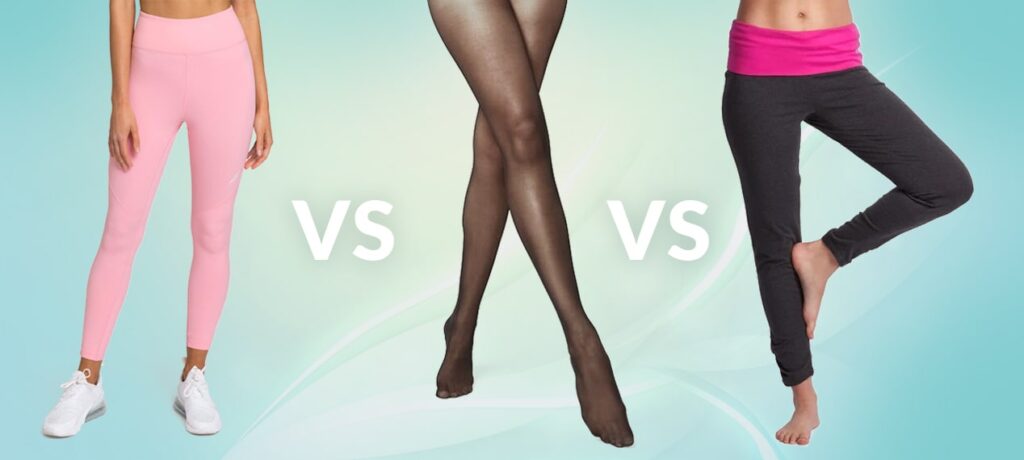
In the world of activewear, leggings vs tights vs yoga pants often cause confusion. These three garments share similarities but have distinct characteristics that cater to different needs and preferences. Understanding these nuances can help you make informed choices for your wardrobe and activities. This article will delve into the differences between leggings, tights, and yoga pants, exploring their materials, fit, and ideal uses.
This comprehensive guide will cover the key distinctions between leggings vs tights vs yoga pants, examining their fabric compositions, fit variations, and suitability for various activities and occasions. By the end of this article, you’ll have a clear understanding of which garment best suits your requirements.
Leggings vs Tights
While both leggings and tights offer a close-fitting silhouette, they differ in their construction and intended use.
Leggings are typically made from stretchy materials like spandex or nylon, providing a comfortable and flexible fit for everyday wear or workouts. They often feature a waistband that sits at the natural waistline and come in various colors and patterns.
Tights, on the other hand, prioritize warmth and coverage. They are usually thicker than leggings with a denser weave, making them suitable for colder weather or outdoor activities. Tights often have a higher waistband for added support and may include features like fleece lining for extra insulation.
Leggings vs Tights: A Quick Comparison
| Feature | Leggings | Tights |
|—|—|—|
| Material | Stretchy, lightweight fabrics (spandex, nylon) | Thicker, denser fabrics |
| Fit | Snug but flexible | Close-fitting and warm |
| Purpose | Casual wear, workouts | Cold weather, athletic activities |
Yoga Pants Defined
Yoga pants are specifically designed for yoga practice, prioritizing flexibility, comfort, and breathability. They typically feature a wider waistband that sits comfortably above the hips, allowing for a full range of motion during poses.
Yoga pants often incorporate moisture-wicking fabrics to keep you dry and comfortable during intense sessions. Some styles also include features like mesh panels for ventilation or pockets for storing small essentials.
Fabric and Material Differences
The fabric composition plays a crucial role in determining the feel, performance, and suitability of leggings, tights, and yoga pants.
Leggings often utilize stretchy materials like spandex, nylon, or polyester blends. These fabrics offer flexibility, moisture-wicking properties, and durability. Tights typically incorporate thicker fabrics with a higher percentage of wool or fleece for added warmth and insulation. Yoga pants prioritize breathability and moisture management, often featuring fabrics like cotton blends, bamboo, or performance synthetics.
Choosing the Right Fit
Finding the right fit is essential for comfort and performance.
Leggings come in various lengths, from capri to full-length, allowing you to choose a style that suits your preference. Tights typically offer a more compressive fit, providing warmth and support during activities. Yoga pants often feature a looser fit around the hips and thighs, allowing for unrestricted movement during yoga poses.
Activities and Occasions
Each type of garment has specific applications based on its characteristics.
Leggings are versatile and suitable for everyday wear, workouts, errands, or casual outings. Tights are ideal for colder weather activities like running, cycling, or hiking. Yoga pants are specifically designed for yoga practice but can also be worn for other low-impact activities like Pilates or stretching.
Conclusion
Understanding the subtle differences between leggings, tights, and yoga pants empowers you to make informed choices that align with your needs and preferences. Whether you prioritize warmth, flexibility, or breathability, there’s a perfect option for every occasion. By considering the factors outlined in this article, you can confidently select the garment that best suits your style and activity level.
